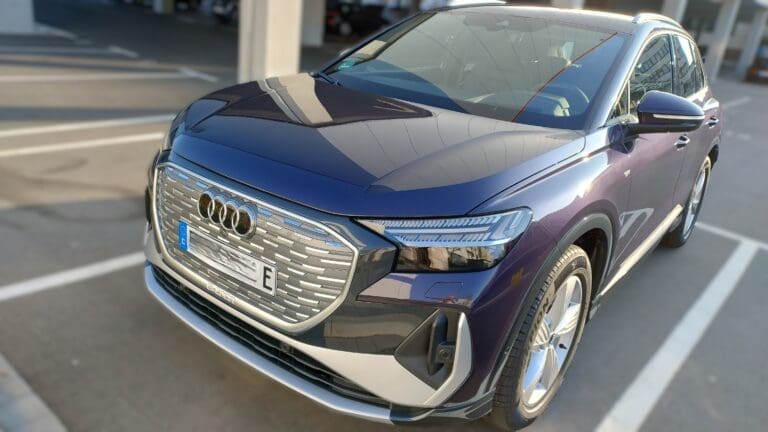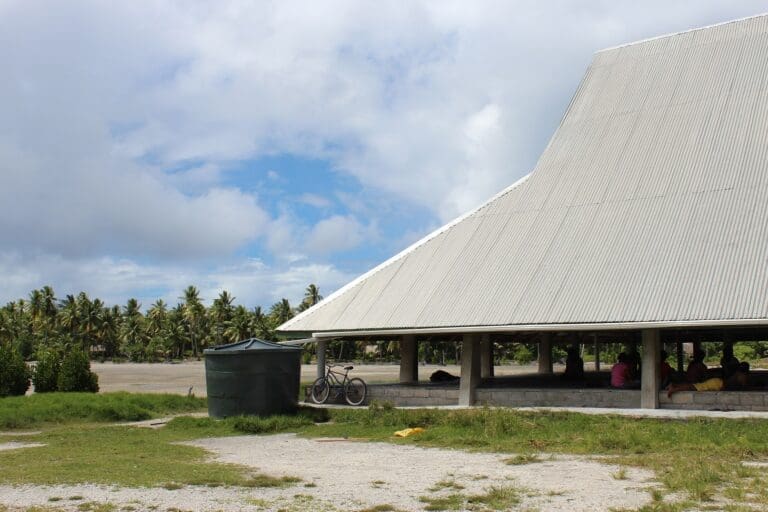Introduction
The Urban Heat Island (UHI) effect is a phenomenon where urban areas experience higher temperatures than their surrounding rural areas.[1][2] This effect is primarily due to the absorption and re-emission of heat by urban structures such as buildings and roads. On top, it is aggravated by energy waste / heat dissipation by industrial structures, vehicles, air conditioning and heating. The UHI effect is particularly noticeable during summer and winter, with temperature differences often greater at night than in the daytime.[1]

Causes of UHI
The UHI effect can be attributed to several factors:[1][2][3]
Low Albedo Materials: Surfaces with low albedo (reflectivity) absorb more solar heat, re-radiating it back into the atmosphere as thermal heat, causing temperatures to rise.[1]
- Dark Asphalt Shingles: These are commonly used in residential roofing. They have a low albedo, meaning they absorb a lot of solar radiation.[3]
- Black Tar Roofs: These are often found on older buildings. The black tar absorbs a high amount of solar energy, contributing to the heat island effect.[3]
- Dark Metal Roofs: While metal roofs can be highly reflective, darker colored metals will have a lower albedo and absorb more heat.[3]
- Dark Slate or Tile Roofs: These materials can also have a low albedo, especially when they are darker in color.[3]
It is important to note that while these materials can contribute to the urban heat island effect, there are strategies to mitigate this. For example, applying a reflective coating to a dark roof can significantly increase its albedo and reduce heat absorption.[4]

Paved and Impermeable Surfaces: These surfaces absorb solar radiation as heat and are typically impermeable, redirecting water runoff to stormwater systems rather than being absorbed by plants or water bodies that help cool the area.
- Roads: Roads are often made from asphalt or concrete, both of which are impermeable and absorb a lot of heat.[5]
- Sidewalks: Like roads, sidewalks are typically made from concrete or other impermeable materials.[5]
- Driveways: Driveways can be made from a variety of materials, including asphalt, concrete, and paving stones. All of these materials are typically impermeable.[5]
- Parking Lots: Large parking lots are often made from asphalt or concrete, making them impermeable and heat-absorbing.[5]
- Industrial Areas: Areas such as airports, ports, and logistics and distribution centers often have large, paved areas.[5]
These surfaces can contribute to environmental issues such as pollution of surface water, flooding, and the heat island effect. However, using permeable paving systems or implementing green infrastructure will reduce these effects.[3]
Surfaces mentioned above could also be covered by Photovoltaic (PV) systems to generate electricity (see Solar Power), or solar panels optimized for heating up water. There have already been first examples where roads have been equipped with PV cell surfaces.
The Urban Heat Island (UHI) effect is not only caused by the physical characteristics of cities, such as concrete and asphalt surfaces, or the geometry of cities, where the narrow spaces between tall structures, known as urban canyons, can block wind and trap heat. Also, the energy used within the city, including heating in buildings, air conditioning and the use of vehicles is contributing to UHI.[2]
- Heating in Buildings: Buildings, especially high-rise ones, release heat from various sources such as heating systems, electronic devices, and human activities. This heat is released into the surrounding environment, contributing to the UHI effect.
- Air Conditioning: Air conditioning systems cool the inside of buildings by expelling heat to the outside. This expelled heat increases the ambient temperature, exacerbating the UHI effect. In fact, it was reported in 1998 that “the air conditioning demand has risen 10% within the last 40 years” in the U.S., and 15% of energy goes towards the air conditioning of buildings in these urban heat islands.[2]
- Energy Usage: Other forms of energy usage, such as transportation and industrial processes, also contribute to the UHI effect. These activities generate waste heat, which is released into the environment.
- Use of vehicles:
- Internal Combustion Engines (ICEs): Only about 20% of the fuel energy is converted into movement, the remaining 80% is lost as waste heat and friction. This waste heat is dissipated into the environment, contributing to the urban heat island effect.[6]
- Electric Vehicles (EVs): EVs convert around 90% of the electrical energy from the grid to turn the wheels. About 32% of the original energy in an EV are lost, but 22% can be recuperated from the brakes and fed back into the battery.[6]
- Internal Combustion Engines (ICEs): Only about 20% of the fuel energy is converted into movement, the remaining 80% is lost as waste heat and friction. This waste heat is dissipated into the environment, contributing to the urban heat island effect.[6]
- In summary, EVs are much more energy-efficient and dissipate less waste heat than ICEs. This makes EVs more environmentally friendly and contributes less to the urban heat island effect.

UHI Impacts
The Urban Heat Island effect increases energy costs, for example, for air conditioning, as buildings need to be cooled down due to the higher ambient temperatures. This increased demand for cooling can strain the electrical grid, especially during hot summer afternoons, making it more susceptible to brown-outs and black-outs.[3][7]
Moreover, UHI effect can lead to higher air pollution levels and heat-related illnesses.[2][3] Therefore, finding ways to alleviate urban heat islands has become a pressing issue, especially considering that nearly 70% of humanity will live in cities by 2050.[2]

Impact on Health and Death Tolls
The UHI effect has significant health implications like increase of cardiovascular diseases, sun-stroke, heat-stroke, dehydration, and is hitting vulnerable people like chronically ill, elderly or babies. It is linked to increased mortality and morbidity, particularly during extreme heat events.[8][9] Note that global warming and extreme heat wave events do not cause the UHI effect. However, they are aggravating it, since the overall temperature base is already at a higher level, with the UHI temperature increase on top.
- As study led by ISGlobal estimated that over 4% of deaths in cities during the summer months are due to Urban Heat Islands. The study used data from 93 European cities, with 57 million people and found that one third of these deaths could be prevented by reaching a tree coverage of 30%. If cities had that coverage in place, 2,664 premature deaths could be avoided in Europe.[10]
- Another study found that during the heatwave of August 2003 in the West Midlands (Birmingham and surroundings), UK, the UHIs contributed around 50% of the total heat-related mortality, so 45 out of a total of 90 deaths. The model used in the study is forecasting 278 deaths for the year 2080.[11]

Countermeasures Around the World
Medellin, Colombia
Medellin has implemented a “green corridors” program to combat the UHI effect. The program, started in 2016, involves planting trees and plants along roads and in parks. The project has resulted in a 2°C temperature reduction across the city.[12]
Tokyo, Japan
Tokyo has developed an Urban Heat Island Index to quantify the extent and severity of urban heat island. The city has also implemented measures such as urban greening and projects focused on cooler roofs and pavements.[13]
California, USA
California has developed an Urban Heat Island Index for individual cities. The index helps identify and prioritize areas across the state for mitigation. Local activities such as urban greening and projects focused on cooler rooves and pavements are prioritized.[14]
Singapore
Singapore has been developing a Digital Urban Climate Twin (DUCT) system, which models urban spaces using a system of models. Different scenarios can be simulated on the system to understand how they affect the microclimate in the surrounding areas.[15]
Singapore, also named “City in a garden” is a role model for a green transformation program spanning already five decades, see Singapore: Solarpunk Queen
Barcelona, Spain
Barcelona has already shown its commitment to environmentalism and successfully implemented measures such as the “Superillas” blocks in the inner city to reduce the UHI effect, see: Barcelona Superblocks: Reshaping Urban Living and Mobility

Conclusion
The UHI effect is a significant environmental issue that poses serious health risks. However, cities worldwide are taking measures to mitigate this effect. These efforts not only help in reducing the UHI effect but also contribute to creating healthier and more sustainable urban environments.
Sources:
[1] https://www.conserve-energy-future.com/effects-solutions-urban-heat-island.php
[2] https://climate.mit.edu/explainers/urban-heat-islands
[3] https://www.epa.gov/heatislands/learn-about-heat-islands
[4] https://en.wikipedia.org/wiki/Reflective_surfaces_%28climate_engineering%29
[5] Impervious surface – Wikipedia
[6] https://yaleclimateconnections.org/2024/01/electric-vehicles-use-half-the-energy-of-gas-powered-vehicles/
[7] https://heatisland.lbl.gov/coolscience/urban-heat-islands
[8] https://www.bmj.com/content/375/bmj.n2467
[11] https://ehjournal.biomedcentral.com/articles/10.1186/s12940-016-0100-9
[9] https://news.climate.columbia.edu/2021/10/04/exposure-to-deadly-urban-heat-worldwide-has-tripled-in-recent-decades-says-study/
[10] https://www.isglobal.org/en/-/4-of-summer-mortality-is-attributable-to-urban-heat-islands
[12] https://www.bbc.com/future/article/20230922-how-medellin-is-beating-the-heat-with-green-corridors
[13] https://www.japanfs.org/en/news/archives/news_id027856.html
[14] https://www.energy.ca.gov/sites/default/files/2021-06/CEC-500-2019-020.pdf
[15] https://phys.org/news/2024-02-singapore-urban-island-effect.html








